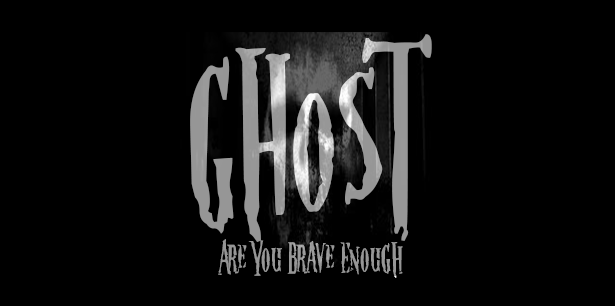A Descent into the Horrors of Poltergeist Chaos
You know, folks, there's something about those things that go bump in the night, those restless spirits that throw a wrench into the gears of our reality. Yeah, I'm talking about poltergeists—the unseen terrors that scratch at the surface of our world, unraveling the threads of normalcy and plunging us into a nightmare we never saw coming. Buckle up, 'cause we're about to peel back the curtain on some seriously spooky poltergeist cases that'll send chills down your spine.
Poltergeists: More Than Just Things That Go Bump
Picture this: objects flying across the room, furniture dancing a twisted waltz, and voices that come from nowhere. That's the poltergeist calling card. Forget Casper, these restless spirits aren't here for a friendly chat. They're here to turn your world upside down, and they sure know how to make an entrance.
Now, some folks say it's all just repressed emotions and psychic energy, bottled up like a pressure cooker waiting to blow. Others, they're not so sure. But one thing's for damn sure—they leave a mark, a footprint on the reality that's hard to ignore.
Tales from the Dark Side: UK's Poltergeist Chronicles

Let's talk about the Enfield Poltergeist, shall we? 1977-1979, North London. A family home becomes ground zero for unexplained chaos. Furniture slides across the floor like it's got a vendetta, and voices rise from the shadows. People can debate authenticity all they want, but when you're there when you feel that icy breath on your neck, doubt's a luxury you can't afford.
Unveiling the Unseen: Unleashing the Unearthly in Thornton Heath

Picture this, my friends—South Kensington, February 21, 1938. Nandor Fodor, a name that would be etched into the annals of the bizarre, sits in his dimly lit office, grappling with a world where shadows dance on the precipice of reality. A letter from a certain Reverend Francis Nicolle, cloaked in the weight of East End mysteries, lands on his desk. And thus begins a tale that pierces the very heart of terror—a tale of poltergeists and the malevolent forces that grip their strings.
Dance with the Shadows: Thornton Heath's Unseen Terror
Nicolle's words spill forth, a symphony of dread. Thornton Heath, a suburban enclave just south of London, is under siege from an unseen assailant—a poltergeist.
The Reverend, a harbinger of doom, calls attention to the haunting and its eerie details, traced in black ink on aged parchment. It's no ordinary haunting. This one's got all the elements of a horror show, intertwined with a national landscape painted in anticipation of chaos. The newspaper, the Sunday Pictorial, paints a picture that melds the supernatural with the political. As Adolf Hitler's presence looms large, ready to unleash his own brand of terror, another kind of malevolence creeps through the suburban streets.
Ectoplasmic Agony: Alma Fielding's Tryst with the Unseen
Alma Fielding, a seemingly ordinary housewife, becomes a vessel of terror. It starts with a pain that

pierces her very core, a pain that drives her to the sanctity of her home. Amidst sleet and snow, her agony takes root, and a symphony of strange occurrences ensues.
Objects shatter, winds howl, and the walls themselves seem to breathe. Alma, her husband Les, and their son Don are plunged into a maelstrom of the supernatural. But it's not just them—the entire house groans under the weight of an otherworldly siege.
A Symphony of Fear: Thornton Heath's Battle for Sanity
Glass shatters, objects whirl and the atmosphere quivers with the whispers of the unseen. Dark forces manifest as projectiles hurtling through the air, orchestrating a dance of dread. Light itself is snuffed out, plunging them into darkness.
It's an eerie ballet, a nightmarish crescendo that defies explanation. The residents, the witnesses to this malevolent symphony, are ensnared in a web of terror spun from their own reality.
Facing the Unthinkable: Ghosts, War, and the Unseen
As Adolf Hitler's thunderous speeches echo through history, and the ominous clouds of war gather over Europe, another war wages—between the seen and the unseen. The haunting, the poltergeist, thrusts itself onto the stage, a manifestation of a nation's anxieties and the unspoken terrors of its people.
In a world on the brink of catastrophe, where the living clashes with the departed, Nandor Fodor stands at the precipice. His mission—to unmask the malevolent entities that dance through the veil between reality and the beyond.
Through the Veil: Where Nightmares and Reality Collide
We're not talking about your run-of-the-mill ghost story here. Poltergeists are like that itch in the back of your mind that you can't scratch. They make you question reality, make you doubt what's real and what's just smoke and mirrors. It's the kind of terror that lingers long after the lights go out.
So, whether you're a true believer or a skeptic trying to hold onto your sanity, remember this—the world's a lot bigger, a lot weirder, than we give it credit for. Poltergeists, they're the cracks in the façade, the glimpses into the shadows that remind us that just maybe, there's more to this world than meets the eye.
#UnleashingTheUnseen #PoltergeistHorror #NightmareReality #UnhingedTerror #UnveilingTheUnseen #MalevolentForces #TerrorUnleashed #OtherworldlySiege #DanceOfDread #SupernaturalHorror #HauntedReality #DarknessAndLight #AnxietyAndTerror #GhostsAndWar #UnseenForces #NightmarishCrescendo





